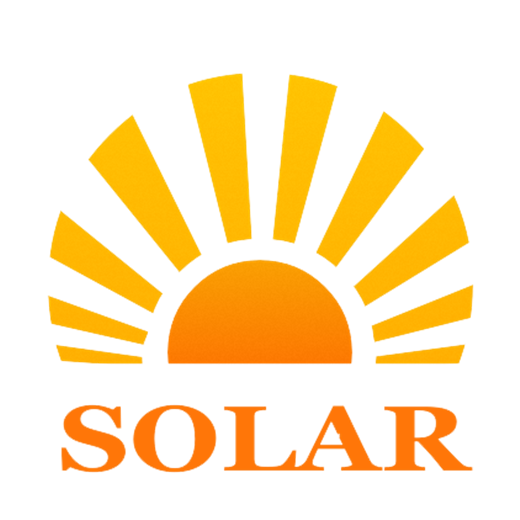Wind-solar hybrid is a set of power generation application system. This system uses solar cell arrays and wind generators (to convert alternating current into direct current) to store the generated electric energy in the battery pack. When the user needs electricity, the inverter will The direct current stored in the battery pack is converted into alternating current and sent to the user’s load through the transmission line; the surplus electric energy is sent to the external power grid. Since the wind power generator and the solar cell phalanx are used to generate electricity together, it can make up for the defects of wind power and photovoltaic independent systems in terms of resources: realize day and night complementarity—solar power generation at noon, and wind power generation at night; seasonal complementarity—strong sunshine in summer , Strong wind energy in winter; high stability – using the natural complementarity of scenery, greatly improving the stability of system power supply.

Small wind and solar hybrid power generation system
A small-scale wind-solar hybrid power generation system generally consists of one or several small and medium-sized wind turbines and a number of solar cell components to form a power source. Charging and inverter into alternating current. The small wind-solar hybrid power generation system can be an off-grid independent power supply system, which generates AC power for the user’s own use, or can form a grid-connected system to send excess AC power to the grid.
The controller has a wind power DC conversion circuit; a photovoltaic input DC conversion circuit; an inverter circuit that generates power frequency, and related detection and control circuits. The main functions of each circuit are as follows:
In order to make the system meet the needs of common electrical appliances, the excess power of the system can be sent to the external power grid, the system output is 380V three-phase alternating current, and the inverter has the function of grid connection. The inverter is composed of a three-phase bridge inverter circuit, and the output has a filter. The filter type is selected according to the characteristics of the local load and the power grid; the output of the inverter is for local users, and can be connected to an external power grid through a grid-connected switch. The inverter is input from the DC bus. In order to make the inverter work normally, the voltage of the DC bus should be around 650V. For smaller inverters, the DC bus voltage is low due to the low voltage of the battery, so a booster circuit needs to be added on the DC input side of the inverter.

Generally, the output of wind turbines is AC output. Micro wind turbines below 1kW have low-voltage single-phase AC output or three-phase AC output; small wind turbines above 1kW have three-phase AC output. Most small wind turbines have their own rectifiers, and many small wind turbines can be equipped with various controllers. In this example, the output of the wind generator is rectified by a three-phase bridge and then sent to the DC bus through the Boost converter (boost circuit); similarly, the output of the solar battery array is also sent to the DC bus through the Boost converter. The busbar delivers DC power to the inverter. If the system is often used as an independent power supply, it should also be equipped with a battery, which is connected to the DC bus. The DC bus can simultaneously incorporate several small wind turbines and solar arrays. In order to simplify the circuit diagram, the unloading circuit is not drawn in the figure.
The micro-wind-solar hybrid system is widely used in the field of public lighting. Each street lamp fully uses wind and solar energy to power the lamp (no need for an external power grid). It has the dual advantages of wind energy and solar energy products. The electric energy is stored in the battery, the switch is intelligently controlled, and it automatically senses changes in external light without manual operation. It is especially suitable for highways, urban roads, flood embankments, landscape roads and rural roads.
The circuit structure of the wind-solar hybrid street lamp system is simple, especially now that low-voltage LED street lamps are used, and high-voltage circuits are not required, the system is relatively simple. Figure 4 is a main circuit diagram of a wind-solar hybrid street lamp.
The micro-wind generator and the photovoltaic battery module are connected together to output the same DC voltage through their respective conversion circuits, and charge the battery through the anti-reflux diode. The LED current control circuit can output a stable current and control the current size. It is also the switch of the LHD light. When it is dark, the system starts the LED current control to output the current to the LED light, and it turns off after dawn. There is also an unloading circuit in the circuit. After the battery is fully charged, when there is surplus electricity, in order to protect the wind turbine and photovoltaic modules, the unloading circuit is turned on to discharge the surplus electricity.

Large-scale grid-connected wind-solar hybrid power stations can be built in desert areas with abundant sunlight and wind. The wind power generator integrates the electric energy into the 380V bus through the wind power grid-connected controller; the solar battery array merges the electric energy into the 380V bus through the photovoltaic power grid-connected controller; , where the wind energy and solar energy are combined through the 380V bus, and the system may consist of multiple wind generators and multiple solar cell arrays. Considering special circumstances, the system has battery backup power.

